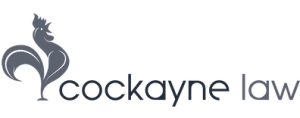Negotiating Car Accident Settlements in Utah: A Step-by-Step Guide for Fair Payouts
If you were hurt in a crash in Utah, you want a fair check without a long fight. This guide shows how settlement talks work here, what proof moves the needle, and when to push harder. Utah uses no fault PIP first, then you can go after the at-fault driver if your injuries meet set rules. You will learn how to build a solid demand, how adjusters think, and how the 50 percent fault rule can change your result. We maintain simplicity to enable you to concentrate on your health and your claim. If you ever feel stuck, a personal injury attorney in Utah can step in and handle the back and forth for you.
Key Info:
- Pain and suffering require meeting thresholds
- A strong demand needs proof and order
- Keep treatment consistent and well documented
- Track every bill, mile, and missed shift
- Do not give recorded statements lightly
- Know the 50% fault bar limit
- Policy limits often cap settlement value
- Use mediation if talks stall for weeks
- File before Utah’s lawsuit deadline expires
Utah Settlement Basics: PIP First, Then Fault-Based Claims
How does no-fault work in Utah?
Regardless of the cause of the accident, the majority of Utah drivers utilize personal injury protection (PIP) to cover initial medical expenses and a portion of their lost wages immediately following an accident. PIP is the initial payer. You can seek pain and suffering from the at-fault driver only when injuries meet Utah’s thresholds, including at least three thousand dollars in medical costs or certain serious harms.
When can you step outside PIP?
Once the thresholds are satisfied, it is possible to submit a third-party claim against the insurer of the at-fault motorist. Your demand may include medical bills beyond PIP, wage loss, future care, and non-economic harm like pain, loss of sleep, or limited hobbies. The demand should also ask the insurer to pay back your PIP carrier if required by law.
Why liability limits matter
Even with strong proof, the other driver’s policy limits can set a ceiling on what you collect. The minimum auto liability limits in Utah went risen to $30,000 per person, $65,000 per accident for injuries, and $25,000 for property damage starting in 2025. Higher limits help in serious circumstances, but a lot of drivers still barely have the bare minimum.
What Drives Settlement Value in Utah?
Proof of injury and care
Insurers weigh the quality of your medical proof. Start care fast, follow through, and keep records tidy. Gaps in care can hurt value. Consistent notes from doctors, clear diagnoses, and treatment plans make adjusters take the case more seriously.
Clear fault stories win
Photos from the scene, a police report, traffic cam clips, and good witness notes help show who caused the crash. If blame looks shared, the insurer will cut the offer. Utah’s modified rule bars money if you are at least 50 percent at fault, so clean facts matter.
Money math that adds up
Write down every bill, co-pay, therapy cost, medical device, and travel to appointments. Add wage loss with employer letters and pay stubs. Save receipts for meds and supplies. The more robust the paper trace, the more straightforward it is to argue for a higher number. A personal injury attorney in Utah can assist in establishing reasonable ranges and identifying any missing items.
Start Strong: Records, Medical Care, and the Demand Letter
Day one checklist
See a doctor the same day if possible. Provide a comprehensive account of your distress. Request a treatment plan and adhere to it. Photograph your car, bruises, and any gear like braces.
Build the demand package
A good demand is clear, short, and backed by proof. It should include a short summary of the crash, fault facts, a timeline of care, itemized bills, wage loss proof, photos, and the effect on your daily life. Close with a firm number that leaves room to negotiate.
- Police report and crash photos
- Medical records and itemized bills
- Wage proof and doctor’s work notes
- Pain and life impact summary
- Proof of hobbies or tasks you lost
Timing the send
Send the demand after you reach maximum medical improvement or have a clear view of future care. Early demands risk missing costs. If care will last months, note future treatment and have your doctor explain why.
Smart Moves With Adjusters During Talks
Keep control of the facts
Adjusters may request a recorded statement. You are not required to provide your consent immediately. Written statements often work better because you can choose your words with care. Share what is needed, not guesses. Stick to facts you can prove with records.
Read every form
Medical releases can be narrow. Use forms that limit the time period and the kind of records shared. Do not hand over your full health history when a shorter window will do. Keep copies of everything you send.
Negotiate with purpose
Open high but fair based on proof. Expect a low first offer. Ask the adjuster to explain their number line by line. Challenge weak points with records. If talks stall, propose mediation. If the offer still stays far below fair value, filing suit keeps the claim alive and shows you are serious. A personal injury attorney in Utah can push this forward for you.
Utah’s Comparative Fault Rule and Your Bottom Line
How fault affects your check
Utah uses a modified comparative fault rule. If you are 50 percent at fault or more, you recover nothing. If you are 49 percent or less at fault, your final amount drops by your share. Let’s say, with a 20% fault, a $ 100,000 award becomes $ 80,000.
Be ready for blame games
Insurers may argue you were speeding, looked at your phone, or waited too long to seek care. Push back with proof. Phone logs, speed data, dashcam clips, and prompt medical notes help. Witnesses who saw the other driver run a light or drift into your lane can cut through the noise.
Clear talk helps juries and adjusters
Use plain terms. Explain how the crash happened with a simple timeline. Use photos and a map. Show how your day-to-day life changed. Keep the focus on proof. A personal injury lawyer in Utah can frame the story in a way that tracks Utah law.
Timelines, Mediation, and Filing Suit in Utah
Typical timeline
Once treatment concludes, straightforward claims may be resolved within a few months. Complex cases with surgery or future care take longer. Patience can pay off, since rushing before you know the full medical picture often leads to a low result.
Mediation as a next step
If talks slow down, a neutral mediator helps both sides see strengths and risks. Mediation is private and can close the gap faster than filing motions in court. Bring your full file and be ready to move within a set range.
Do not miss the deadline
The general deadline for filing a lawsuit in Utah for injuries resulting from a car accident is four years. Wrongful death and certain claims are subject to shortened timeframes. Failure to submit your paperwork promptly may result in the forfeiture of your rights. Talk to counsel early so you do not cut it close.
Hire a Trusted Car Accident Lawyer in Utah: Meet Chris Cockayne Team
When you want steady help through this process, Chris Cockayne and the team at Cockayne Law bring deep Utah experience to car cases. They know how PIP works here, when you can step outside no fault, and how to build a demand that lands. They gather records fast, line up strong doctors, and handle adjusters so you can focus on healing.
If blame is shared, they work the facts to keep your fault number low and your result strong. They push for fair offers, set up mediation when needed, and file suit if the carrier will not move. Clients appreciate clear updates and straight talk. If you are looking for a personal accident lawyer in Utah who will treat your case with care and urgency, this is a team to consider.
One call to Cockayne Law can start the process the right way.
Final Thoughts
Fair settlements do not happen by chance. They come from quick medical care, neat records, clear fault facts, and steady talks. Utah rules on PIP, fault, and deadlines shape your path, so know them and use them to your advantage. If the insurer starts to stall or cut corners, it is recommended to bring in a personal injury attorney in Utah to level the field. Stay patient, stay organized, and keep the end goal in view. Your health should be prioritized, and the financial resources should correspond to the losses and future requirements.
FAQs
What is PIP and how does it affect my case in Utah?
PIP pays early medical bills and some wages regardless of fault. You can pursue pain and suffering from the at-fault driver only after meeting Utah’s threshold rules for injuries and medical costs.
How do I figure out a fair settlement range?
You should consider adding medical costs, wage loss, and other out-of-pocket items. Estimate future care with doctor input. Then add a fair pain and suffering amount that fits your proof. Policy limits and fault share set the outer bounds.
What if the at-fault driver’s insurance is too low?
You may use your own underinsured motorist coverage after the other policy pays out. Your carrier reviews proof and offsets. This can raise your total recovery when injuries are serious.
How long will my case take to settle?
Simple cases can settle in months once care ends and records arrive. Complex injuries, surgery, or future care estimates add time. Mediation can speed things up if talks stall.
What paperwork should I collect before sending a demand?
Police report, photos, medical records, itemized bills, wage proof, and a short daily life summary. Order matters. Put key points and numbers up front. Make it easy for the adjuster to say yes.
When should I hire a lawyer for my claim?
If injuries are more than minor, if fault is debated, or if the offer seems too low, it is wise to call a personal injury lawyer in Utah. The right help can raise value and reduce stress.









